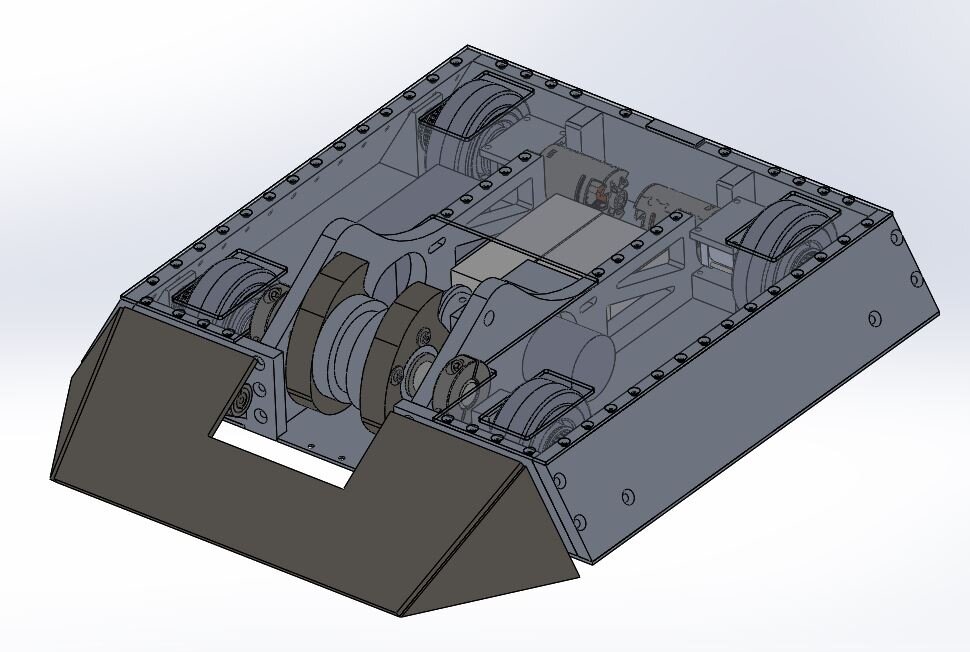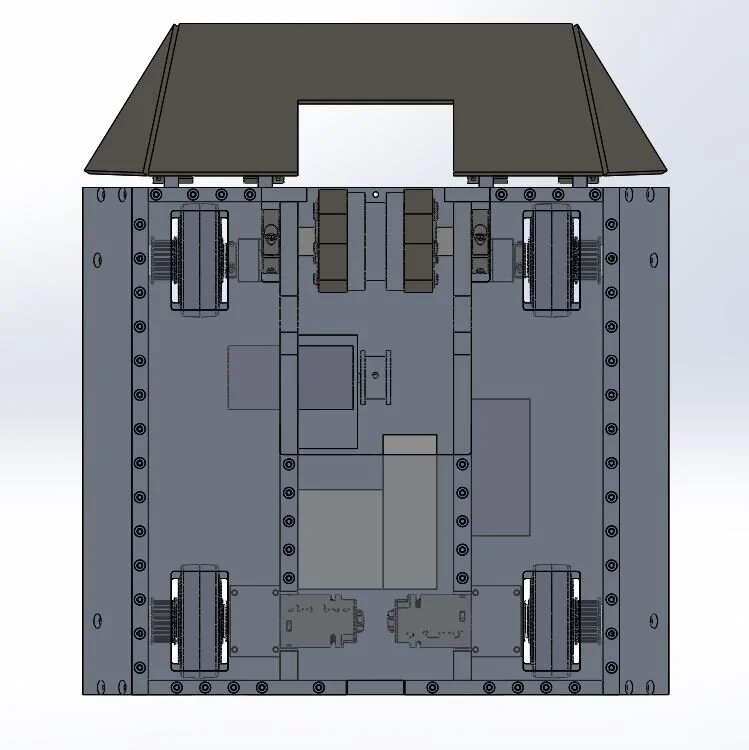







The 2017-2018 Flagship Battlebot team comprising twelve dedicated ASME members built a 60 lb. combat robot (Wedgie) to compete in the Robogames in Pleasanton this April. A pulley driven by a 800 kv brushless DC motor allows two 4140 steel waterjetted blades to spin at 1400 RPM, delivering high impact energy to oncoming opponents. The two-wheel drive system is powered by brushed 18 V Dewalt motors, a Ragebridge dualchannel motor controller, and heavy duty Turnigy 5000 mAh 7s 60 C Lipo batteries.

Finalizing the CAD design took the entire fall quarter. We wanted to go back to a more classic Battlebot wedge design after having experimented with creativity with 2017’s DangerCone.

Each teammate was responsible in groups of two for doing the CAD on a subsystem: chassis, drive system, weapon system, wedge, and FEA on a different subsystem for crosschecks. I worked on the wedge and attachment to the chassis, and performed FEA on the weapon system.

We waterjetted the aluminum 7075 base and top plates and the three parts that make up the 4140 steel wedge.

The side walls called for a really interesting set up on the manual mill with the angle vice set to 30 degrees and use of my favorite tool: the fly cutter!

Finally, the three-part wedge waterjetted from 4140 steel was TIG welded together for maximum strength by a Spacex welder and good friend of mine, as well as the aluminum 6013 tabs that fuse the wedge to the bot’s front wall. I determined that 6013 was the intermediary material that could be welded to both steel and aluminum after initial research.